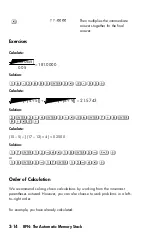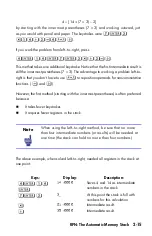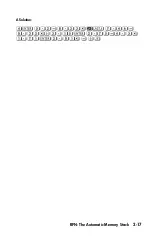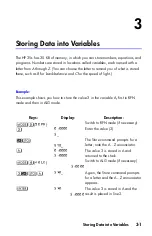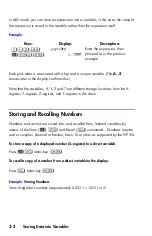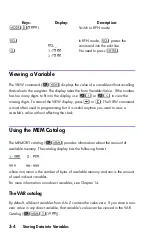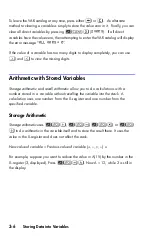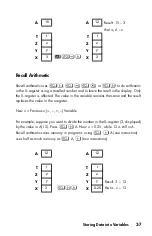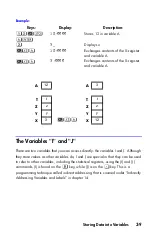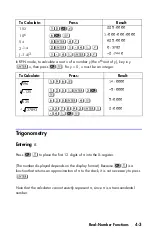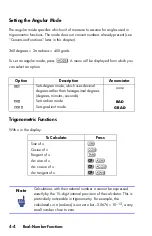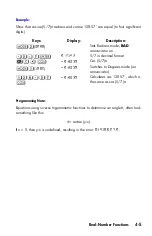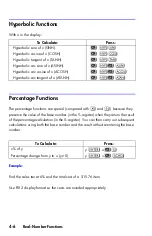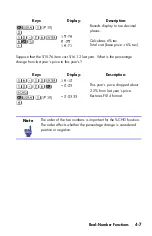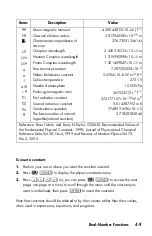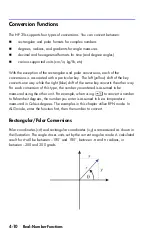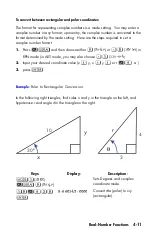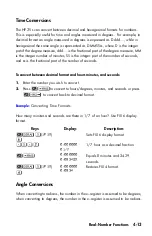
3-8
Example:
Suppose the variables
D
,
E
, and
F
contain the values 1, 2, and 3. Use storage
arithmetic to add 1 to each of those variables.
Suppose the variables
D
,
E
, and
F
contain the values 2, 3, and 4 from the last
example. Divide 3 by
D
, multiply it by
E
, and add
F
to the result.
Exchanging x with Any Variable
The
key allows you to exchange the contents of
x
(the displayed X –
register) with the contents of any variable. Executing this function does not affect the
Y–, Z–, or T–registers.
Keys:
Display:
Description:
D
E
F
Stores the assumed values into the
variable.
D
E
F
Adds1 to
D
,
E
, and
F
.
D
Displays the current value of
D
.
E
F
Clears the VIEW display; displays X-
register again.
Keys:
Display:
Description:
D
Calculates 3
÷
D
.
E
3
÷
D
×
E
.
F
3
÷
D
×
E
+
F
.
Summary of Contents for 35s
Page 1: ...HP 35s scientific calculator user s guide H Edition 1 HP part number F2215AA 90001 ...
Page 14: ...12 Contents ...
Page 15: ...Part 1 Basic Operation ...
Page 16: ......
Page 46: ...1 30 Getting Started ...
Page 63: ...RPN The Automatic Memory Stack 2 17 A Solution ...
Page 64: ...2 18 RPN The Automatic Memory Stack ...
Page 74: ...3 10 Storing Data into Variables ...
Page 180: ...12 14 Statistical Operations ...
Page 181: ...Part 2 Programming ...
Page 182: ......
Page 246: ...15 12 Solving and Integrating Programs ...
Page 270: ...16 24 Statistics Programs ...
Page 284: ...17 14 Miscellaneous Programs and Equations ...
Page 285: ...Part 3 Appendixes and Reference ...
Page 286: ......
Page 308: ...B 8 User Memory and the Stack ...
Page 322: ...C 14 ALG Summary ...
Page 336: ...D 14 More about Solving ...
Page 346: ...E 10 More about Integration ...
Page 352: ...F 6 Messages ...
Page 370: ...G 18 Operation Index ...
Page 382: ...Index 12 ...



